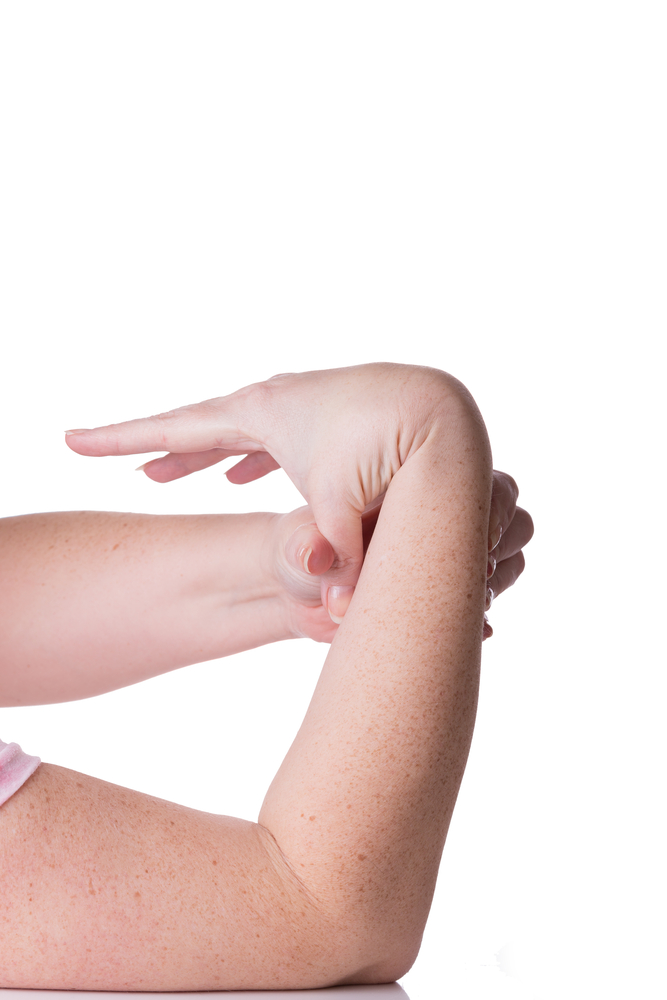Connective tissue disease

Hello readers and welcome to our next blog instalment. This month it’s Connective Tissue (CT) Disease. There are many different CT disorders, with too many to cover in one blog, so we’ve written a bit of an overview so you can learn the basics. The big question we hear you ask is “What is connective tissue?”.
Connective tissue is the stuff in our bodies that holds all of our cells together. It's a bit like glue. It has a special role, allowing our skin and other tissues to stretch and then return back to their original state. You can kind of think of it like an elastic band that stretches and recoils over and over. Connective tissue is made of protein, and the main examples in the body include collagen and elastin.
Connective tissue disease can pretty much affect any part of our body. Our bodies are made up of trillions of cells (approximately 37.2 trillion!) which all require some form of glue to ensure we are held together in our human form. There are diseases that affect our skin, muscles and tendons, ligaments, bones and cartilage, blood and blood vessels, eyes and more!
Types of disease
To make things a little easier to get your head around, we can break CT diseases into two categories:
• Inherited diseases: These are diseases passed down to us in our genetic make-up. Most of these diseases occur due to a mutation of a single gene.
• Autoimmune diseases: These are diseases where our bodies create antibodies that fight against our own tissues. In this case, it’s the connective tissues that our body is fighting against.
Inherited diseases
Here’s a brief overview of a few inherited CT diseases:
• Ehlers-Danlos Syndrome (EDS): A group of 13 differing conditions that affect collagen in the body. Common symptoms include very mobile joints and excessively stretchy and fragile skin. People may also experience heart and lung problems as well as weakened blood vessels.
https://www.back-in-business-physiotherapy.com/we-treat/ehlers-danlos-syndrome.html
• Marfan Syndrome: A condition that affects the production of the protein Fibrillin-1 in the body. Symptoms are widespread, affecting the blood vessels, heart, bones, joints and eyes. Marfan Syndrome affects approximately 1 in every 5000 people.
• Osteogenesis Imperfecta: Also known as 'Brittle Bone' disease. This is a condition that affects collagen (specifically Type I) and leaves bone more fragile and prone to fracture. Other signs and symptoms include a blue tinge to the whites of the eyes, hearing loss and weak joints and teeth.
Autoimmune diseases
Here’s a brief overview of some autoimmune CT diseases:
• Rheumatoid Arthritis (RA): This is not to be confused with the more common Osteoarthritis (OA). RA is a condition typically associated with inflammation of the small joints of the body, like those found in the hands, feet and wrists. Joints become hot, red, swollen, painful and stiff as the body fights against the tissues that line and surround the joints. Over time, the joints go through degenerative change and may appear deformed. This condition may also cause inflammation around the lungs and heart, as well as affecting many other systems of the body.
• Systemic Lupus Erythematosus (SLE): A condition that causes inflammation of the skin, joints and various organs of the body. Symptoms are widespread and include a butterfly shaped rash on the face and nose, light sensitivity, mouth ulcers, kidney disease and mental illness including memory loss.
• Scleroderma: A group of conditions that lead to the thickening and scarring of the skin, organs and blood vessels. People may also experience Raynaud’s Phenomenon; a condition where the blood vessels in the fingers and toes go into spasm resulting in a lack of blood flow to the area. This will look like areas of white and blue over the skin with numbness being another symptom.
It is not uncommon for people with one autoimmune CT disease to show signs and symptoms of other autoimmune diseases too. In these instances, a person is referred to as having Mixed Connective Tissue Disease (MCTD). Many people with these overlapping conditions go on to receive a firm diagnosis of SLE or Scleroderma later in life.
We hope you found this blog a helpful tool for learning about CT diseases. If you have a CT disease or want to know more information on a particular condition, feel free to ask us next time you are in the clinic or through Tele Health. Have a great month and stay safe everyone.
References:
1. Healthline. 2018. Diseases of Connective Tissue, from Genetic to Autoimmune. [Online]. Available from: https://www.healthline.com/health/connective-tissue-disease. [Accessed 08 April 2020]
2. National Geographic. 2013. How Many Cells are in Your Body? [Online]. Available from: https://www.nationalgeographic.com/science/phenomena/2013/10/23/how-many-cells-are-in-your-body/. [Accessed 08 April 2020]
3. Arthritis Foundation. 2020. Mixed Connective Tissue Disease. [Online]. Available from: https://www.arthritis.org/diseases/mixed-connective-tissue-disease. [Accessed 08 April 2020]
Uploaded : 28 April 2020




